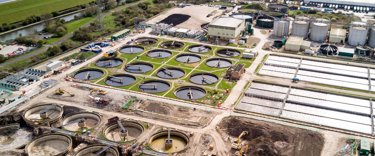Achieving an effective and efficient AMP close out
Closing out a large capital programme can be time consuming, resource intensive and complicated. Those difficulties are only exacerbated when there is ‘hang-over work’ between control/regulatory periods and the next control/regulatory period is bigger, bolder, and more complex.
Clients often find this transition period difficult. Trying to focus on a fast start to the new AMP with new needs, projects, process and sometimes partners is hard enough, without needing important resources focused on closing out the past as well. It’s equally tough for partner organisations, for the same reasons, as well.

Frequently, this means that close-out activities are left, not focused on, and often drag way beyond the contract/framework periods, into the next AMP (or even longer). Does that matter? Indeed, it matters significantly because it means the following negative impacts are likely to occur:
- Lack of certainty and confidence in final outturn costs, project completion programmes and open avenues for cost escalations
- Time and resources are not fully focused on the new programme, leading to slow and ineffective starts
- Regulatory close out of outcomes/outputs isn’t complete, leading to unnecessary regulatory ping-pong
- New/uprated assets aren’t fully or properly logged into RCV, leading to capital raising issues in future
- Customers aren’t clear, or informed, of the improvements that have been made for them
- Defects periods are left unmanaged, or unmitigated, and leave operations with legacy issues to deal with leading to operational issues and costs
- Operations teams aren’t fully trained and/or don’t have the latest asset data to use
- Asset teams can’t fully assess the performance of interventions to adapt long term future delivery plans
- Contracts are left unclosed, leaving final accounting and final payments incomplete and gain/pain calculations undetermined, leading to unclear future budget needs
- Contractors are left making claims for longer, leading to no straight edge on contracts and future demand on budget and time/resource being uncertain
- Lessons can’t be fully learned and embedded to improve future efficient, effective completion of work
- Staff lose motivation as they can’t begin / fully focus on new work as the legacy millstone remains and they are operating multiple processes in dual environments
The benefits of an efficient close out
If you could close out an AMP effectively, efficiently and in a cost-effective manner this would enable you to focus on the future for your delivery teams. Your operations team would be correctly able to use new/uprated assets to deliver the service you need to provide. You could enable customers and regulators to see and confirm the great work you’ve delivered and innovations could be assessed, the benefits realised and for it to be embedded in business-as-usual processes. Your budgets will be clear and locked down and your RCV and asset base will be recorded accurately and were fully up to date. Your partners will be clear on where they stood commercially and could more easily transition to the future without contractual baggage.
The benefits of a successful, efficient, and timely close out of an AMP’s programme are significant. The benefits also reverberate across the ecosystem – with benefits for you as client, your designers, your contractors and your customers, stakeholders, and regulators.
Our strategy
We can help you achieve these benefits through our progressive confidence-based risk and assurance AMP close out approach. Our collaborative approach has 3 phases: Discover, Develop, Deliver (DDD) and is outlined below.
Discover
During the Discover phase, we will work with our clients to develop a picture of the overall portfolio of projects under management, their status (and readiness for close out) and any areas where added value can be gained. During this phase we will carry out a high-level review of all contractual and non-contractual requirements to build a picture of the close out process needed.
As part of this phase, we will work with clients to define the success criteria for the close out review and advantages to be gained.
Develop
In the Develop phase, we will build on the findings of the Discover report to define a detailed scope for the review. This will involve a more detailed assessment of individual contracts to determine status, timeline and actions required to comply with all aspects of a successful close out.
At this time, we will agree with clients an order of precedence for projects to be closed out, which will be grouped into project packages.
The output of this phase will be a detailed programme of close out project packages and a defined progress and performance dashboard developed to record progress.
Deliver
Upon commencement of the Deliver phase, we will commence a progressive, confidence-based approach to project close out and assurance.
This will start with a full audit of the first project packages to determine common areas of high and low confidence across the portfolio. As the intelligence gained from the full audits on the initial work packages grows, we will then start to carry out spot checks on the high confidence areas and continue full audits where confidence levels remain low.
Throughout this stage we can compile any development opportunities (positive and negative) and work with both clients and suppliers to identify lessons learned and shared improvement opportunities.
What is progressive risk & confidence-based assurance?
Quite simply, the aim is to develop intelligence on close out activities across the full portfolio of projects, allowing us to incrementally focus on areas where the most improvement is needed. This will deliver more efficiency and confidence in the close out process over time, building better processes and allowing a faster realisation of the benefits. We will achieve this through implementing a robust close out ‘audit’ process, building a picture of areas of high, medium and low performance on a project, portfolio and supplier basis.
Once we have built a detailed picture of a reasonable sample of projects, we will be able to ascertain common issues and areas for concentration across portfolios and on a supplier-by-supplier basis.
Once this knowledge is gained, we can then adopt a confidence-based approach to subsequent projects by concentrating on the medium and low performance areas. A spot check approach will be maintained on high performing elements to ensure continued compliance.
By adopting this approach and forming a constant feedback loop to both client and suppliers, we can reduce the burden on close out by gaining increasing confidence across all areas of review. Any lessons learned can be adopted into the processes for management of live projects, increasing the likelihood of a rapid close out in the future.
Should the eventuality arise that any areas start to fall away from high performance, we will revert to detailed scrutiny to manage overall quality and performance back to a high confidence level.
What will be closed out?
All aspects of project close out can be addressed through this process, which could include:
- Governance – Compliance with all non-contractual governance processes and procedures
- Costs – Compliance with contract mechanisms and allowances
- Contractual administration – All processes have been followed and no incomplete matters remain open
- Design – All design checks and approvals have been competed and are compliant with statutory, contract, and client governance requirements
- Construction – All works have been completed and all systems working in accordance with the contractual specifications
- Handback – All handback procedures have been followed
- HSQE – All investigations have been closed out and sites have been left in an acceptable standard
Our experience
Programme & Project Management expertise: to apply project and programme best practice, to manage the overall close out and corporate governance requirements, keeping all stakeholders supportive through engagement and reporting.
Contract and NEC expertise: to make sure the contracts have been correctly applied, risk is mitigated and managed, and the projects and frameworks correctly closed out.
Commercial & Cost expertise: to financial close each project and framework and close out incentive payment mechanism where appropriate and processing asset value returns for your finance teams.
Technical Asset & Engineering expertise: to make sure the outputs and assets of the scheme have been correctly delivered, and work with you on driving operational and asset management handovers, defects manageable and technical issue resolution.
Process Design & Simplification Expertise: to collaboratively create a simple, efficient and effective process, with progressive assurance to close out the AMP.
We also have the benefit of reach-back into our expertise where we can draw up regulatory specialists, risk managers and other specialists as the need requires. For example, this could mean our regularity specialist collaboration with you to confirm regulated asset values for your RCV returns, helping close out the AMP’s performance commitments and the associated returns, or our risk manages supporting your corporate governance teams in collating the close out risk positions.
Latest resources
Here to solve your biggest challenges and grow sustainable value
Our expert consultants are available to broaden your thinking, lead transformation, and help you achieve successful outcomes.
Contact our experts





